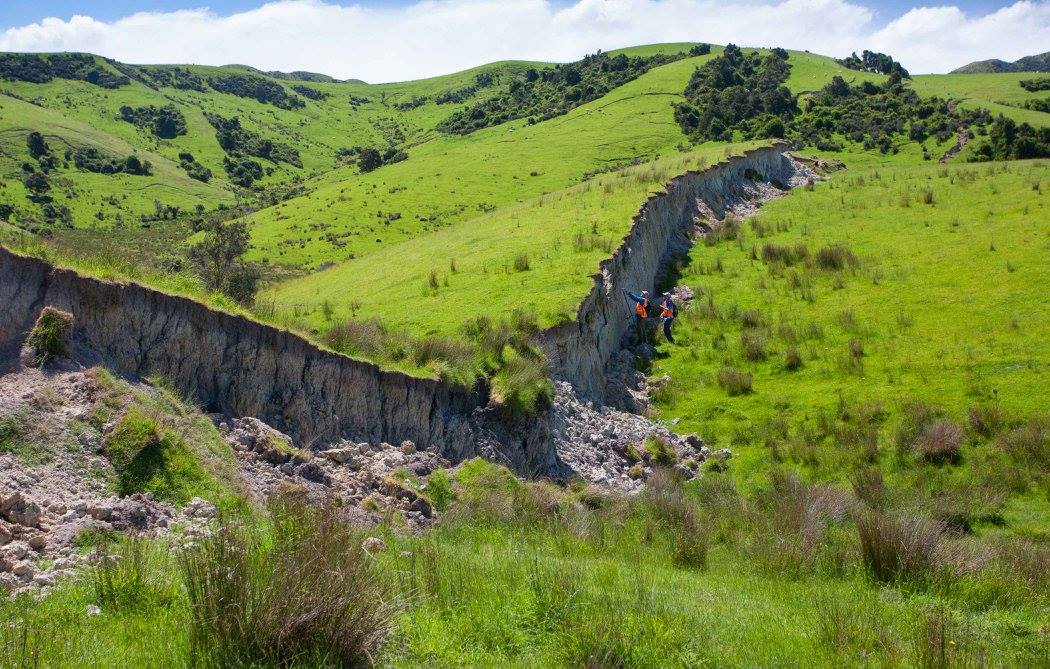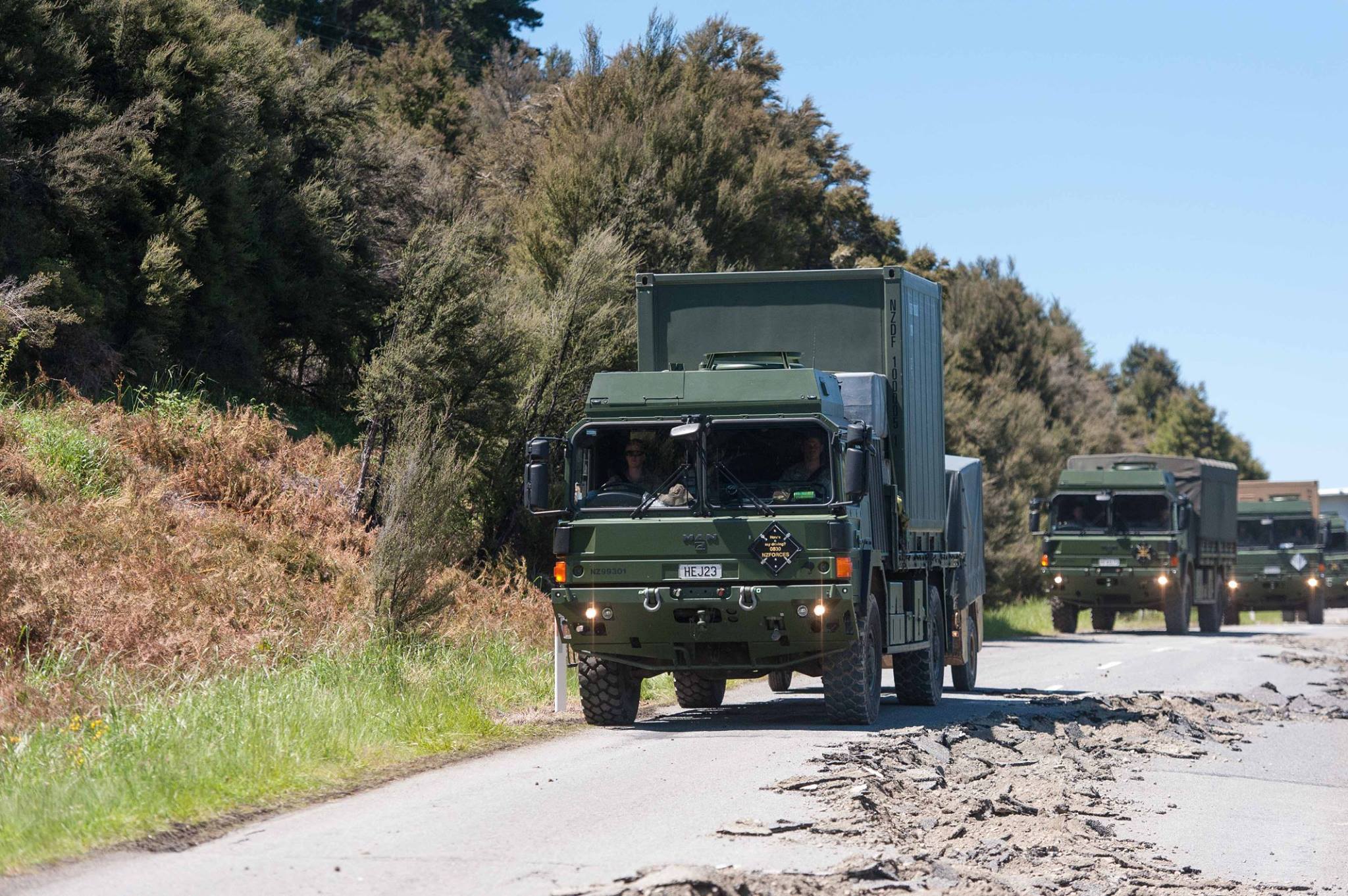'Be prepared for a major earthquake': Gerry Brownlee warns Kiwis as slow slips between tectonic plates detected
Unusual slow-slip seismic movements may mean there's an increased risk of a 7.8 magnitude or greater earthquake in the lower North Island, according to GeoNet.
1
December, 2016
Simultaneous
slips have been recorded at Gisborne, Hawke's Bay and Kapiti, the
earthquake monitoring service said on its website on Thursday.
"We've
been observing slow-slip events in these regions (and Manawatu) for
15 years now, and we've never seen them happen in multiple locations
all at once.
"But
we've never tracked slow-slip events after a large magnitude 7.8
earthquake, so this could the normal pattern after such a large
quake."

Dr Kate Pedley shared this image of a rather large scarp which was taken as she carried out reconnaissance investigations following the quake. Source: Dr Kate Pedley, University of Canterbury.
The
slow-slip events may mean there's an increased risk of a magnitude
7.8 or greater quake in the lower North Island, GeoNet says.
"Were
such a quake to occur it would be likely to cause a large tsunami
that would pose a threat to coastal communities in much of the North
Island, the upper South Island and Chatham Islands."
GeoNet
says that message could be unsettling, and Kiwis must be proactive
and prepare for an earthquake and tsunami.

The "rocky and undulating terrain" conditions on the road in an out of Kaikoura have been likened to those of Afghanistan by a Defence Force sergeant. Source: NZDF.
Civil
Defence Minister Gerry Brownlee also raised earthquake preparedness
in Parliament on Thursday, citing the uncertainty slow slips have
created about future quakes.
"This
heightened activity increases the uncertainty about the likelihood
and size of future earthquakes," Mr Brownlee said on Thursday.
"While
it's not scientifically possible to predict future earthquakes, this
ongoing seismic activity is a reminder to us all that we live in a
seismically active country and should always be prepared for a major
earthquake," Mr Brownlee added.
He
later criticised parliamentary colleagues who laughed at a question
from fellow government MP Chris Bishop about what New Zealanders
could do to prepare for a quake.
"It's
a good question and it's not a laughing matter in these
circumstances. The Kaikoura earthquake has prompted important
conversations about being prepared for earthquakes and tsunamis,"
he said.
New
Zealanders should have a household plan, plenty of food, water and
other supplies, and if they're near the coast move immediately after
a long or strong quake rather than waiting for official warnings.
"The
earthquake itself is the natural warning."
The
Kaikoura earthquake was a magnitude 7.8 quake in the South Island of
New Zealand that occurred two minutes after midnight on November 14
No comments:
Post a Comment
Note: only a member of this blog may post a comment.